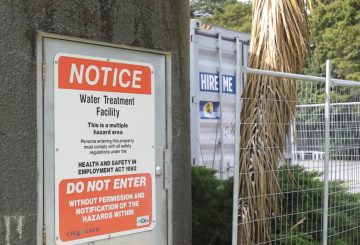テ・パティ・マオリは、地方自治体にマオリ区について住民に尋ねることを義務付けることは民主的であるという政府の主張を批判している。同党の議員は、マオリ系の政府議員が人種差別を自分たちの文化に「内面化」したと非難した。
火曜日、連立政権の地方政府改正法案が可決された。この法律により、地元住民に投票を行わずにマオリ区を設置する議会は、投票を行うか、区を撤去することが義務付けられています。
シメオン・ブラウン地方政府大臣は、前の労働党政権が「意見の分かれる変化」を行ったため、マオリ区の設立に関するコミュニティの声が奪われ、それが民主主義を弱体化させたと主張している。彼は、今日は「地方民主主義にとって素晴らしい日だ」と強調した。
しかし、テ・パティ・マオリ議員のマリアメノ・カパ・キンギは、政府は自分たちの都合の良いときにのみ民主主義を支持すると主張した。彼女は、政府の民主主義の定義に矛盾があるのに、なぜ地方議会が異議を唱えられないのかと疑問を呈した。
労働党は以前、地方区など他の区は投票を必要としないと主張して、マオリ区に関する住民投票の必要性を断念していた。労働党党首のクリス・ヒプキンスは新法を批判し、マオリの扱いは非マオリとは違うと批判し、すべての人が平等に扱われるべきだと主張した。
ヒプキンスは、マオリの住民が自分の区に「追加票」を持っていることを否定し、マオリの区でも一般区でも、誰もが1票しか得られないと発言した。
この法案は、ACTとNZ First Party(ニュージーランド第一党)との合意の一部であり、両党とも国民党に加えてマオリの議員もいる。
カパ・キンギ氏は、地方自治体におけるマオリの代表の役割の重要性を強調し、マオリの区はうまく機能し、地域社会の強力な支援を受けていると強調した。国民議会議員のジェームズ・ミーガーはこの法案を擁護し、テ・パティ・マオリはマオリであることについて唯一正しい見方をしていると信じていると述べた。
彼は、民族や背景に関係なく、あらゆる視点を尊重すべきであり、この法案はマオリ区の創設において地域社会に発言権を与えるべきだと言いました。
カパ・キンギは、ミーガーのコメントは「内面化された人種差別」から生じたものだと批判し、彼の視点は特権に対するより広い意味での安心感を反映していると指摘した。
ミーガー氏はこれに対し、カパ・キンギの発言に答えるよりも、有権者にとって重要な問題に焦点を当てたいと答えた。





























































